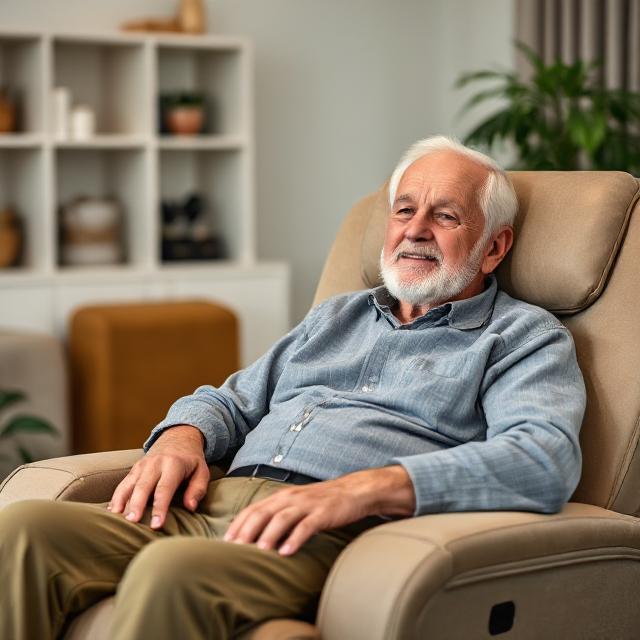Sleeping in a recliner can be surprisingly comfortable — even therapeutic — when done correctly. Many people (especially the elderly, post-surgery patients, or those with back or breathing issues) actually sleep better in a recliner than a flat bed.
Here’s how to do it properly:
1. Choose the Right Recliner
Wide enough for you to shift positions a little.
Good lumbar support (your lower back shouldn’t sag).
Smooth reclining mechanism — you don’t want to struggle with stiff levers.
Soft but firm cushioning — you want comfort, but not a sinking feeling.
Consider an electric power lift recliner – these are particularly useful for people with limited mobility, which could be as a result of a disability, health condition (including convalescing post-surgery), or old age. Because it can be difficult to lower oneself into and out of a chair in these conditions, the power lift recliner lifts and tilts to help you get on and off the chair, so you don’t have to strain as you lower yourself onto the chair or stand up on your own. Some electric recliners also have a massage option.
2. Support Your Neck and Back
Use a small pillow or rolled towel behind your lower back (lumbar area) if your recliner doesn’t support it well.
Neck pillow or a small, firm pillow behind your head can prevent neck strain.
A soft blanket tucked around your sides can also create a cozy “nest” feeling.
3. Elevate Your Legs (But Not Too High)
Proper foot elevation reduces swelling and improves circulation.
Ideally, your knees should be slightly lower than your hips — not sharply bent.
If your recliner doesn’t lift your feet high enough, place a pillow under your calves (not your ankles) for better support.
4. Keep Warm but Not Sweaty
Use lightweight blankets you can easily adjust.
Recliners don’t “breathe” as well as beds, and overheating can disrupt your sleep.
Consider layers instead of one heavy blanket.
5. Position the Recliner Correctly
Recline enough so your torso is around a 30-45 degree angle.
You don’t have to go fully flat — in fact, many people sleep better slightly upright.
Fully upright (like sitting) may cause back pain or worsen sleep apnea.
6. Create a Bedtime Routine
Dim the lights, turn off electronics, maybe listen to calm music or an audiobook.
Doing a “wind-down” routine signals to your body that it’s time to sleep — even in a recliner.
7. Special Tip for Long-Term Recliner Sleepers
Shift your weight occasionally if you’re in the chair overnight.
Use a seat cushion (like a memory foam pad) to reduce pressure on your hips and back.
Keep water nearby — recliner sleeping can sometimes lead to dry mouth.
Bonus:
If you sleep in a recliner due to medical needs (like acid reflux, heart failure, or post-surgery recovery), ask your doctor about the best reclining angle and whether extra support (like wedges) might help.




